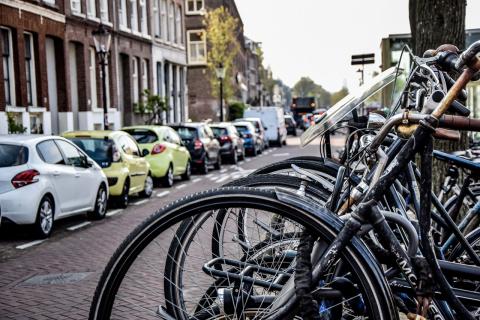Report: Role of individual mobility in the national Long-Term Strategies of EU Member States
Transport and mobility are an essential part of our daily lives. Unfortunately, currently, most of the transport modes depend on fossil fuels. Transport further has other negative impacts on society, such as pollution, as well as noise pollution and using plenty of space.
Long-term climate strategies (LTS) are economy-wide documents outlining the transition to a climate neutral society until 2050. The transport sector, with its emissions, plays an important role in the path towards climate neutrality. In almost all EU countries the majority of GHG emissions in transport comes from personal road transport. For this reason, our report focuses on how European Union (EU) Member States (MS) approach and deal with individual mobility in their LTSs. In the report, we analysed all 23 LTSs that were submitted by December 2022 and all of them cover the transport sector. Due to different approaches and analytical backgrounds, as well as the data provided, our analysis is divided into two parts. In the first part, we used and compared the data on current transport emissions as well as projections under different scenarios that EU MS report to EEA and UNFCCC. In the second part, we focused on the LTSs and how they cover different aspects connected to individual mobility: electricity and hydrogen as fuels, public transport, a decrease in mobility needs/transport demand, the role of cycling and walking, and the role of spatial planning.
In 2020, emissions from domestic transport accounted for a bit more than 22 % of the whole EU-27 emissions. However, the year 2020 was atypical due to the COVID-19 pandemic which resulted in a decrease of the emissions from transport sector compared to the preceding year. Nevertheless, the trend has been upwards so far as emissions from domestic transport in 2019 in EU-27 increased by 24 % compared to the year 1990.
In all countries that have submitted their LTSs, personal road transport emissions account for more than 50 % of the total country’s transport emissions. The country with the highest share of personal road transport emissions is Italy (66 %), followed by Estonia (65 %) and Croatia (65 %).
Out of all countries that report to EEA and UNFCCC, only six reported the projections with additional measures (WAM) until 2050. For Portugal and Slovenia, the projected decrease is in line with the goals in the LTS. Despite this, all countries providing WAM scenarios need to make more progress to reach the goal of 90 % GHG emissions reductions in the transport sector by 2050. Another important conclusion from the reported WAM scenarios for the year 2030 is, that although all countries predicted emission reductions (compared to the year 2019, which was one of the years with the highest GHG transport emissions), none of the countries exceeds 50 % emission reduction.
Bolder steps in the next two decades will therefore be crucial to reach the goal of 90 % GHG emissions reduction by 2050. The assessment of the road transport emissions (including freight transport), which accounted for over 90 % of transport emissions in all countries excluding Greece in 2019, has uncovered an additional gap between current actions, emission reduction pathways and ambitious goals to be achieved.
Trstenjak, K., Đorić, M., Udovič, A. M. (2022): Role of individual mobility in the national Long-term Strategies of EU Member States, Jožef Stefan Institute, Ljubljana.
Marko Đorić
Ana Marija Udovič
Jožef Stefan Institute
